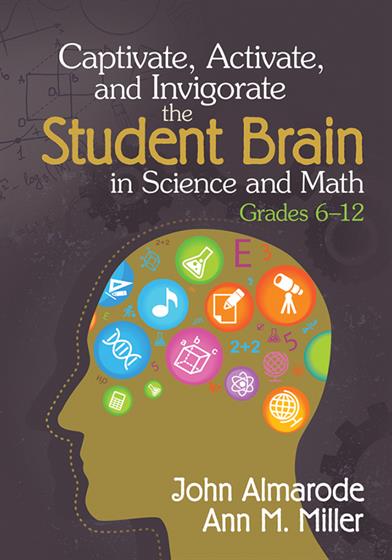Foreword
Preface
Acknowledgments
About the Authors
1. The Recipe for an Engaged Brain
The Recipe for Student Engagement
Recipes as Frameworks
Using Your Engagement Monitor
Engagement: An Overt and Covert Operation
You Can Lead Students to Class, but Can You Make Them Think?
Chapter 1: 3-2-1 Exit Ticket
Engaging Professional Development Tasks
References
Engaging Professional Development Tasks
2. Building Background Knowledge
Using Models to Build Background Knowledge
A Road Map of the Brain
The Nuts and Bolts
Engaging the Students With Vocabulary
Pandora's Box
Chapter 2: Concept Development Exit Ticket
Engaging Professional Development Tasks
References
3. Prime the Brain: Activate Prior Knowledge
The Deafening Sound of Silence
Making Student Brains More Efficient
Getting Better Encoding, Retention, and Recall
Link to the Recipe for Engagement
Chapter 3: "Fist List" Exit Ticket
Engaging Professional Development Tasks
References
4. Captivate With Novelty
In the Classroom, Novelty Is the Spice of Life
Emotionally Charged Events
Goldilocks and the Three Bears: Novelty in Moderation
Chapter 4: Exit Ticket
Engaging Professional Development Tasks
References
5. Why Do We Need to Know This? Establishing Relevance
How Is Relevance Good for the Brain? A Mouse Tale
How Can I Make Learning Behaviorally Relevant?
Link to the Recipe for Engagement
Chapter 5: Exit Ticket
Engaging Professional Development Tasks
References
6. Too Much, Too Fast: Maintaining an Engaging Pace
Input and Quantity Limitations
Press and Release
What to Do Between Chunks?
Too Much, Too Fast
Chapter 6: Exit Ticket
Engaging Professional Development Tasks
References
7. Make Learning a Long-Lasting, Invigorating Experience
It's as if They Were Never Even in Class
Checking for Understanding
Reading
Closure Activities
A Watched Pot Never Boils . . . and This Is a Good Thing
Chapter 7: Exit Ticket
Engaging Professional Development Tasks
References
8. Building an Engaging Science or Mathematics Lesson and Unit
Using the Recipe to Build an Engaging Lesson
Using the Recipe to Build an Engaging Unit
A Recipe for Diversity
Taste Testing the Recipe
Chapter 8: Exit Ticket
Engaging Professional Development Tasks
References
Appendix A Unit Instructional Plan
Appendix B Daily Lesson Plan
Index




